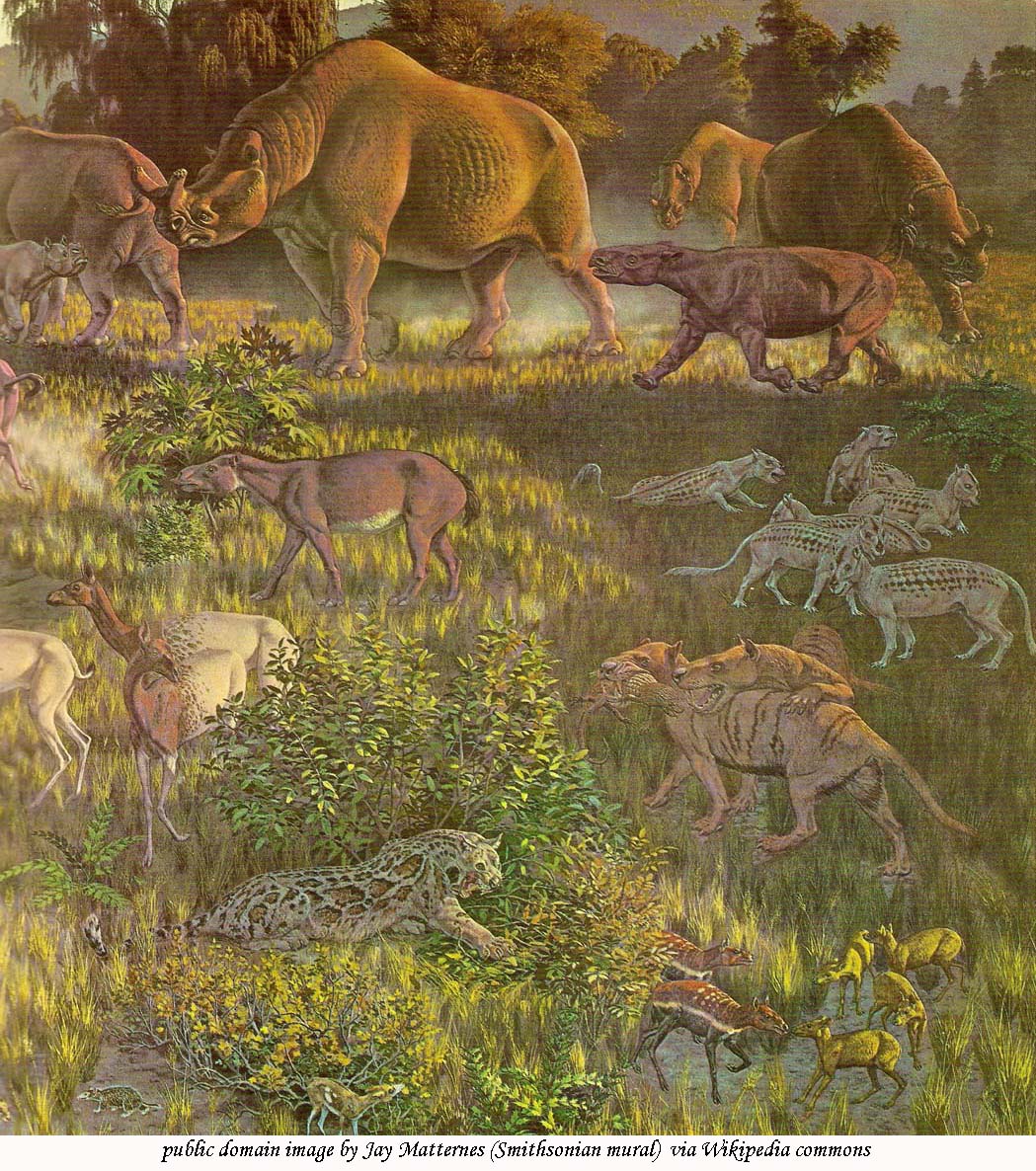Paleocene (from Greek: παλαιός, palaios, “old”; and καινός, kainos, “new”) is a geological epoch that lasted from approximately 66 to 56 million years ago. It was the first period of the Paleogene Period in the Cenozoic Era. The Paleocene Epoch is bracketed by two major events in Earth’s history. It started with the mass extinction event at the end of the Cretaceous Period called the Cretaceous–Paleogene boundary or K–Pg boundary, which marked the demise of non-avian dinosaurs and many other groups of life. This was followed by the Paleocene–Eocene Thermal Maximum (PETM), a brief interval characterized by extreme warming across much of Earth’s surface.
During this epoch, mammals had diversified and were gradually becoming dominant over other terrestrial vertebrates for the first time in Earth’s history. The Early Paleocene saw the rise of three mammalian clades: artiodactyls (even-toed ungulates), perissodactyls (odd-toed ungulates), and multituberculates. These clades would dominate mammal communities throughout most of the Cenozoic Era. In addition to these early mammals, reptiles continued to be an important part of terrestrial ecosystems during this time; crocodilians were especially common in near-shore marine environments and freshwater habitats such as lakes and rivers. Birds also became more prevalent during this epoch as some groups began to evolve into modern forms while others went extinct.
The Late Paleocene is marked by another significant event in Earth’s history: the Paleocene–Eocene boundary or PE boundary. This was a mass extinction event that wiped out many species, including all members of one group of reptiles called mesosaurs. Mammals were largely unaffected by this event and continued to thrive; new groups such as primates and rodents appeared during this time. The PETM also occurred during the Late Paleocene; it was responsible for widespread oceanic anoxic events (OAEs) that resulted in large-scale loss of marine life. Despite these challenges, many new species emerged during this time and diversified into new niches both on land and in water environments around the world.
The Paleogene Period ended with another mass extinction event known as the Eocene–Oligocene boundary or EOBoundary which occurred approximately 33 million years ago. This event caused widespread extinctions among marine creatures such as foraminifera as well as on land where forests give way to grasslands due to cooling temperatures and changes in atmospheric composition . Afterward, Earth entered into a period of gradual cooling that continues through today; this trend began during late Oligocene and has been punctuated by several ice ages since then .


